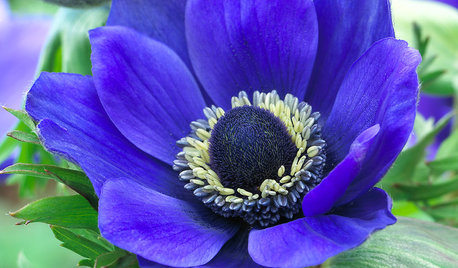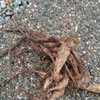From my garden journal
English Bluebell
(Hyacinthoides non-scripta)
IÂve been lusting after this fragrant wild flower ever since I read about its folkloric background in Brian FroudÂs book FAERIES. In the autumn of 2004 I planted several English Bluebell bulbs underneath a white river birch tree. I must say that I was rather disappointed by their spring performance. The sweet fragrance was lovely but the bulbs bloomed for a very short period of time, no more than 2 weeks tops. The color was a bit off too. I was expecting a medium to deep shade of violet-blue but in reality the pale flowers are more lavender than blue. The flowers are also tiny and lacking in presence. Frankly I got much more satisfaction from the grape hyacinths planted in the same bed. On the positive side the bluebells did extend the spring color in this bed by two weeks as they bloomed right after the grape hyacinths were finished for the season. The curved stem supporting the nodding flowers is also quite charming. I might try digging them up and planting them in clumps in areas of the garden dominated by purple colored flowers.
Other names: Bluebell, Wood Hyacinth
Class: Bulb
Bloom Time: late spring for 2 weeks
Exposure: partial shade
Fragrance: yes, similar to Dutch hyacinths but sweeter and lighter
Height: 8-10"
Planting Time: autumn
Soil: prefers black loam but my soil is red clay that has been amended for better drainage
Zones: 4-8
Folklore: From Brian Froud's FAERIES "The English Bluebell is considered one of the most potent faerie flowers and a bluebell wood is an extremely hazardous place to be  an area of glamour woven spells and enchantment".
Source: BreckÂs Bulbs (http://brecks.com)









shrubs_n_bulbs
brian2cv
Related Professionals
Grand Haven Landscape Architects & Landscape Designers · Aberdeen Landscape Contractors · Azalea Park Landscape Contractors · Boca Raton Landscape Contractors · Cliffside Park Landscape Contractors · Dallas Landscape Contractors · Dedham Landscape Contractors · Emmaus Landscape Contractors · Muttontown Landscape Contractors · Palatine Landscape Contractors · Pleasant Hill Landscape Contractors · Ponte Vedra Beach Landscape Contractors · Porterville Landscape Contractors · Silver Firs Landscape Contractors · Shafter Landscape ContractorsMolineuxOriginal Author
shrubs_n_bulbs
MolineuxOriginal Author
brian2cv
Mozart2
gottagarden
cynthianovak
shrubs_n_bulbs
MarkG_UK
excumbrian
shrubs_n_bulbs
hugh_t
hugh_t
janis7
ponderosa_alpenglow
flora_uk
ponderosa_alpenglow
buyorsell888
ponderosa_alpenglow